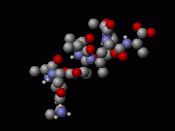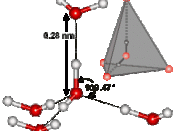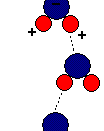Water has many unique properties that make life possible on Earth. One property is cohesion. The cohesion property is properly defined as the binding of water molecules by hydrogen bonds. Water has this property as a result of the chemical bonding between water. Cohesion of the strong hydrogen bonds allows the water molecules to stick together, almost as a unit of one. A force exerted on one of the molecules will be exerted on all of the adjacent molecules as a result of cohesion. Cohesion, often with the cooperation of adhesion, the clinging of one substance to another, adds to the function and ability of water to overcome strong natural forces, such as gravity. When water is in its liquid state of matter, the hydrogen bonds are very frail and weak, about one-twentieth as strong as covalent bonds. The bonds are made, broken, and remade very quickly. Each hydrogen bond lasts only a few trillionths of a second, but the constant synthesis of new bonds with a succession of partners acquires equilibrium.
Therefore, a significant percentage of all the water molecules are bonded to their neighbors, making water a more orderly structured liquid than most other known liquids. A property related to cohesion is surface tension, a measure of how difficult it is to stretch or break the surface of a liquid. Water is known to have a greater surface tension than most other liquids. An ordered arrangement of hydrogen-bonded water molecules is present at the boundary between water and air. As a result water behaves as though it is coated with an invisible film along the surface. An example how the cohesion of water affects the functioning of living organisms is present in plants. Evaporation from the leaves in plants pulls water up from the roots. Cohesion due to...



Good essay
good essay!
0 out of 0 people found this comment useful.